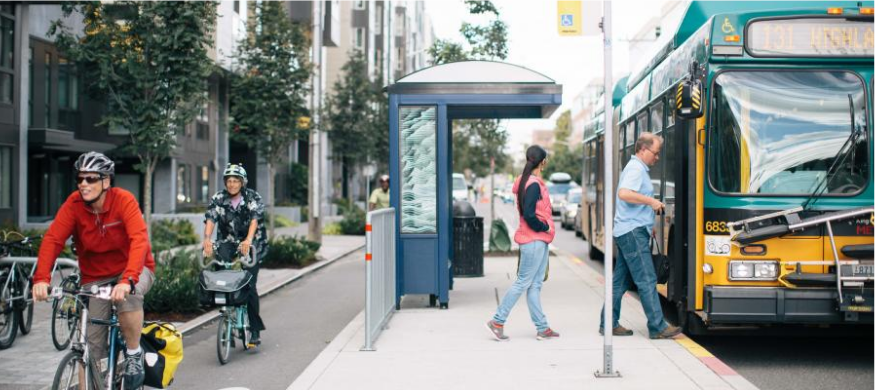DOWNLOAD THE REPORT PDF
What’s the problem?
Denverites need to be able to get around our city without driving: As our city population continues to boom, we have limited space for cars and therefore must make walking, biking, and transit more safe and convenient for everyone. Furthermore, one third of the population can’t or doesn’t drive, including all children under age 16, about 20% of older adults, people with disabilities, and lower income households that can’t afford a car. Transportation costs are typically the second biggest household expense, after housing.
Walking, biking, or taking transit just isn’t a safe option for many residents because:
- 40% of Denver’s streets have missing or substandard sidewalks.
- Less than one-third of planned bicycle lanes have been built
- Only 36% of residents have access to frequent, all-day transit service
Real mobility options have been woefully underfunded:For many years, Denver’s funding levels for walking and biking have lagged behind peer cities. At current funding levels, about $5 M per year, it would take hundreds of yearsto build safe sidewalks and bike lanes in every neighborhood

Poor street design has created a public health crisis in Denver:Denver’s traffic fatality rate is more than double the rate in Seattle, and more than triple the rate in Minneapolis. Nationwide, traffic crashes are the leading cause of death for people between the ages of 5 and 35.

What’s the Solution?
Build complete walk, bike, and transit networks throughout Denver:
In order for residents to have safe and easy ways to get around without driving, every neighborhood must have a complete sidewalk network, bicycle lanes that are separated from vehicular traffic, and rapid, frequent transit lines that actually connect people to their daily destinations. Just building out the sidewalk and bicycle networks in a timely manner will require an investment of at least $40 million per year over the next 20 years.
Starting with the City’s 2019 Budget, fund high priority needs:
- At least $10 M for new sidewalks where they are missing on the City’s high injury network, the 5% of streets where 50% of traffic fatalities occur
- At least $6 M for new bike lanes to connect neighborhoods in the center city
- At least $5 M for safety improvements on Federal Blvd, which has a traffic fatality rate 20 times the average for urban streets in Colorado
- At least $1 M for quick, low-cost improvements that can enhance safety immediately while the City finds additional funding for longer-term improvements
- Funding to update Denver’s street design standards, which are outdated and do not reflect current best practices for designing streets that are safe for people walking, biking, and accessing transit
How will we measure progress?
Mayor Hancock’s Mobility Action Plan establishes ambitious goals for the year 2030, including reducing the percent of people who drive alone to work from 73% to 50%, and reducing traffic fatalities from more than 50 per year to zero. To achieve these goals, each year Denver must implement specific action items outlined in the Vision Zero Action Plan and in the Denver Movessuite of plans.
In 2018, the City committed to:
- Build 14 miles of new sidewalks
- Build 20 miles of new bike lanes
- Install or upgrade pedestrian crossings at 3 locations
- Redesign 2 intersections to increase safety•Implement operational improvements at 10 intersections
- Implement “Smart City” technologies at 10 intersections
- Implement traffic calming on 1 corridor
- Enhance street lighting to improve safety on 2 corridors
In 2018, Denver also committed to finalizing the Denver Moves: Transit Plan, to complete the suite of plans that currently includes Denver Moves: Bicycles and Denver Moves: Pedestrians and Trails. The plan will identify priority corridors for rapid, frequent transit that serves neighborhoods throughout the City.
The Denver Streets Partnership will evaluate whether the City has fulfilled these commitments in early 2019.

